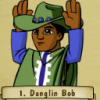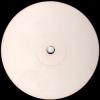I think DanglinBob has a good point.
If we Look at the Tetris grid, Icon grid and list inventories; we can see there is a clear difference in the items hoarded.
Consider these three items: Sword 5 dmg and 10 Gold / A Broom 2 dmg and 2 Gold / A Cup 1 dmg and 1 Gold
As far as gold is concerned the value of each item is 1 Sword = 5 Brooms = 10 Cups
Now with a list inventory a new value will be added to prevent players from looting any thing that isn't tied down, the new value is weight. The Sword 3 lbs / Broom 1.5 lbs / cup 0.1 lbs.
30 Cups > 1 Sword > 2 Brooms
In Icon grid any item takes one slot, often these items have a stack value to control there worth. Sword 4 Stack / Broom 4 Stack /Cup 9 Stack.
4 Swords > 4 Brooms > 9 Cups
For the Tetris grid each item consists of small squares (X,Y). Sword 3*2 / Broom 4*1 /Cup 1*1
1 Sword and 2 Cups > 2 Brooms
These different inventories allow the developer to place value where it is important, also to tweak the values of each item.
I agree with Nyaanyaa, all of these inventories can be tweaked to have the exact same values and to function the same mechanically. The important difference between them is how the mechanic is experienced, from the players viewpoint.
I also want to point out that even if all of these systems can be used in exactly the same way, most developers don't use them the same. The real world has a influence on the value of items, even in games, these small changes cause the inventories to differ drastically.














